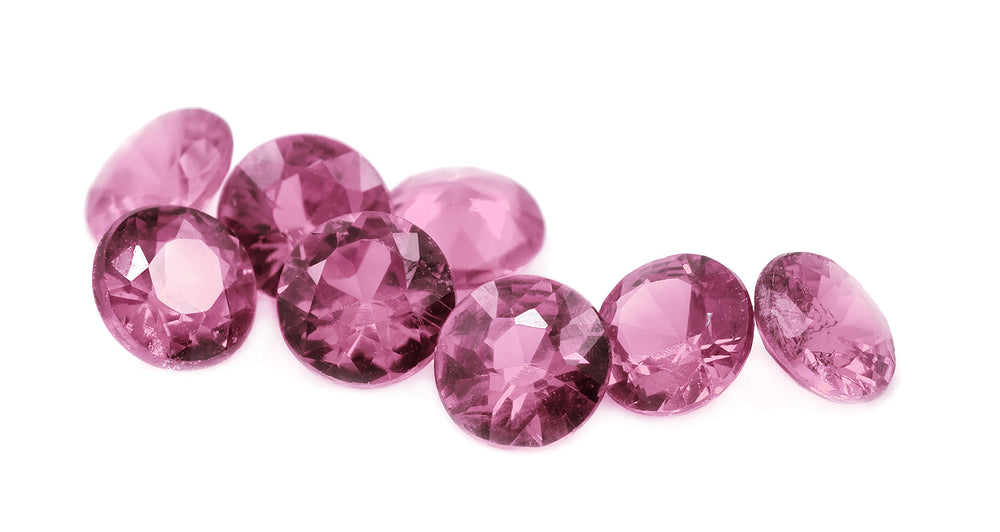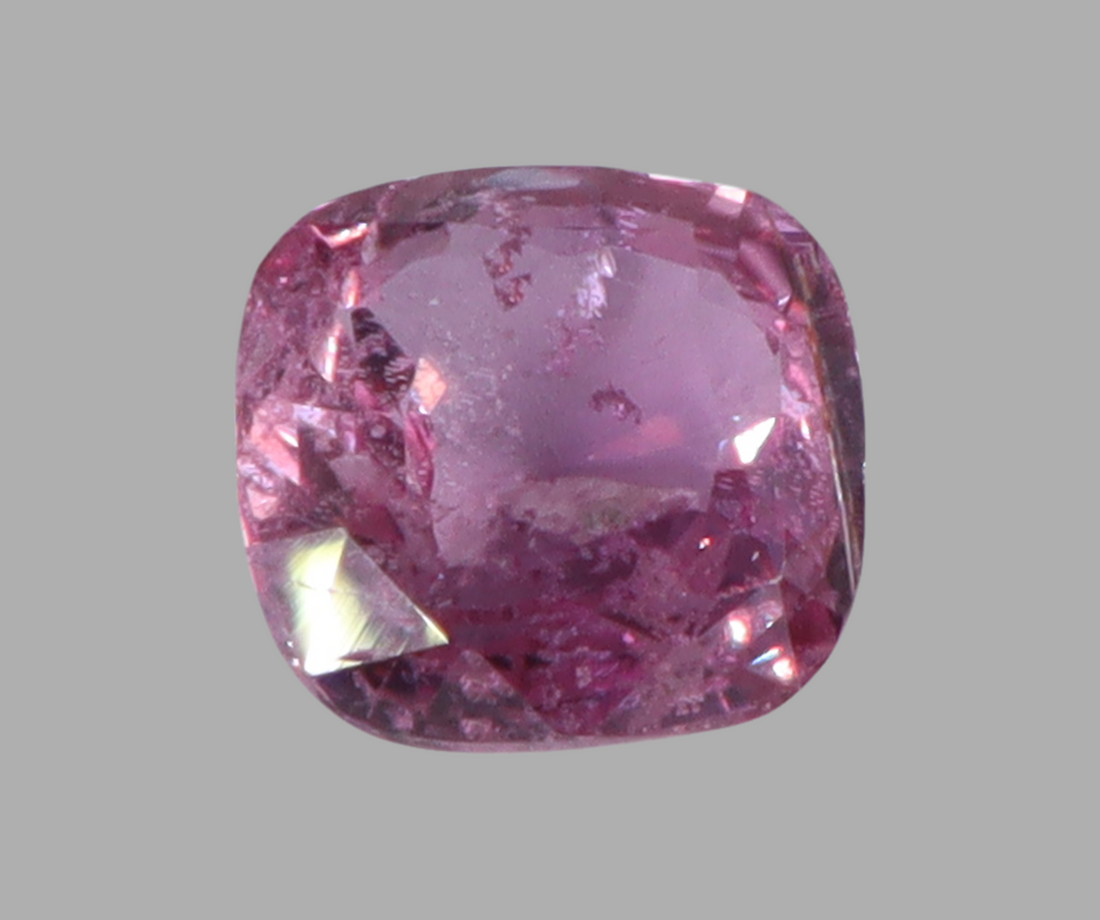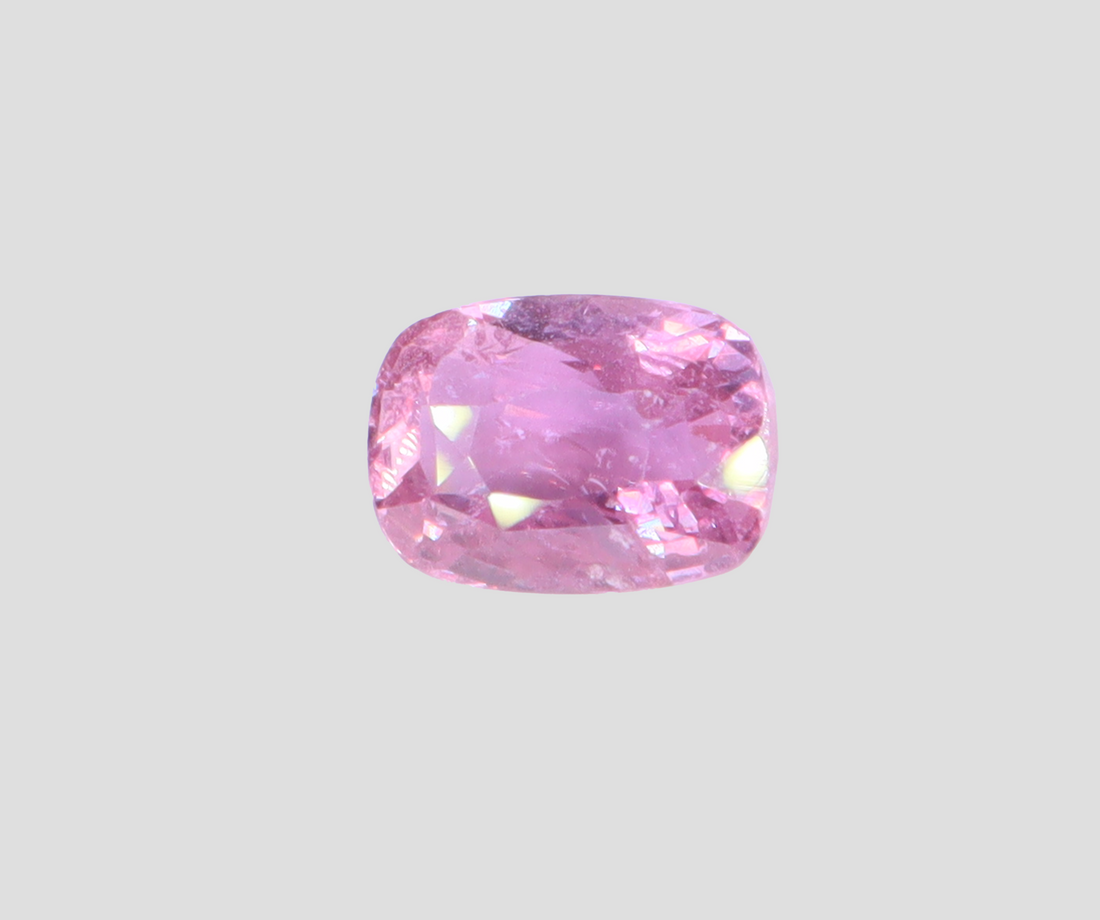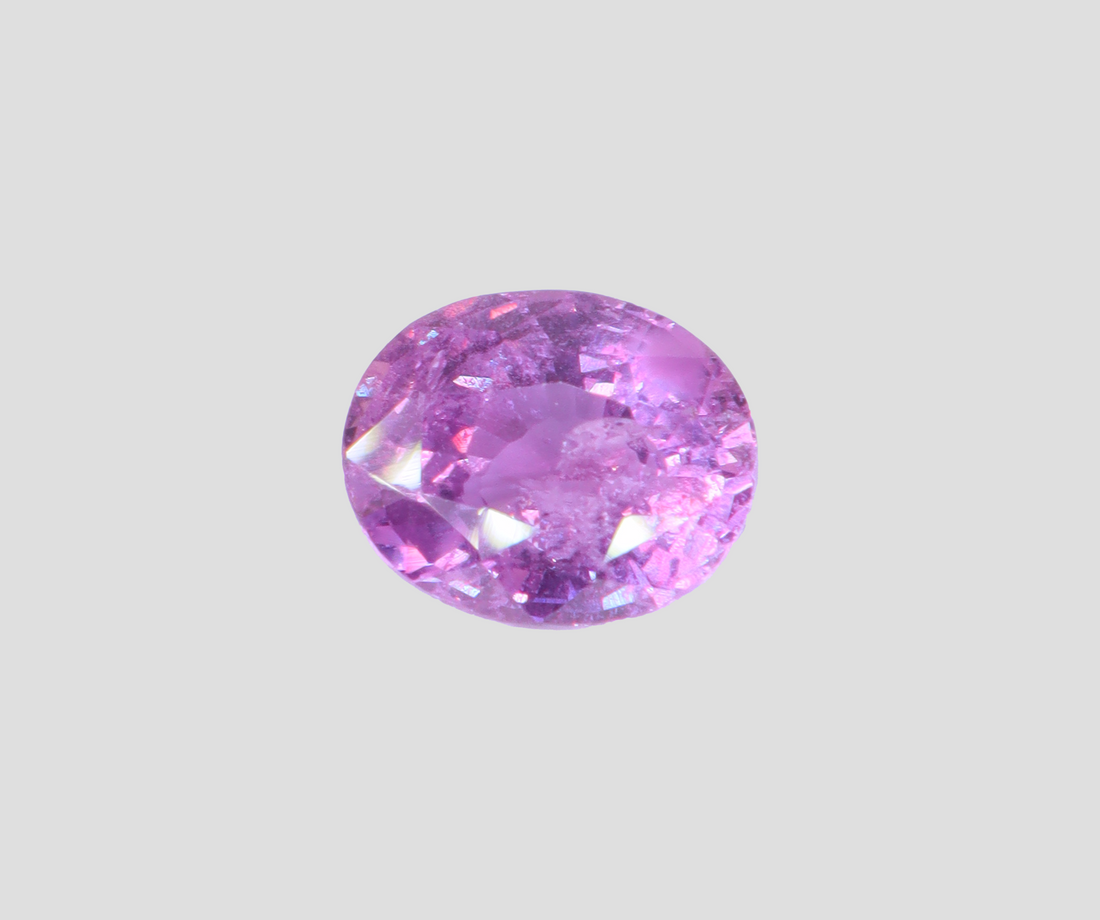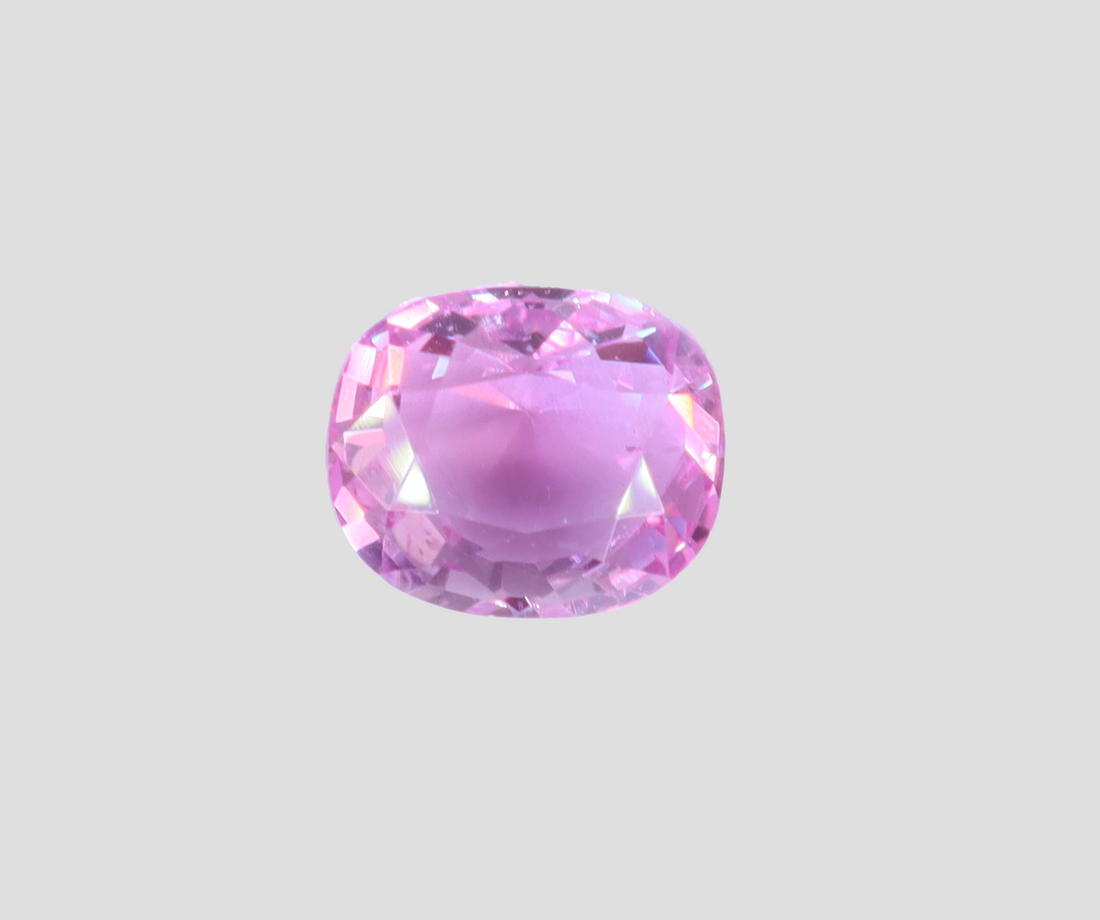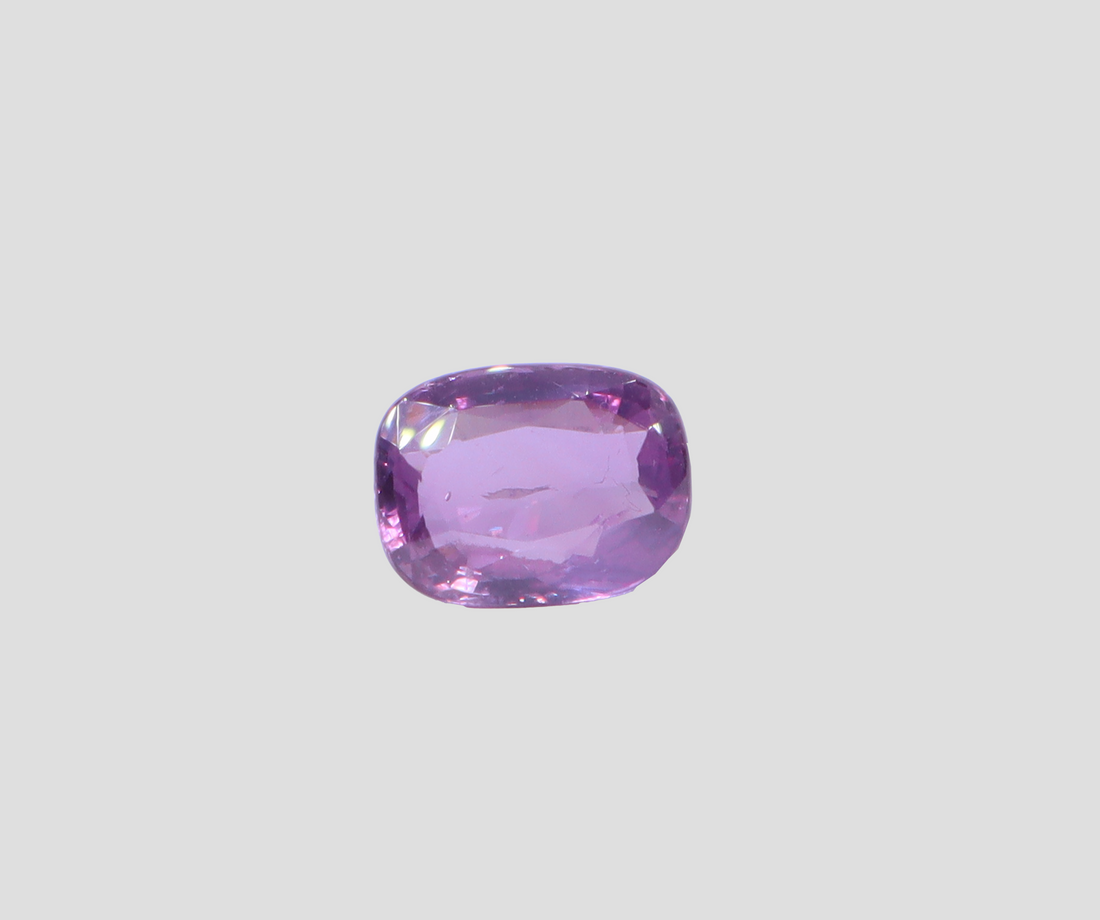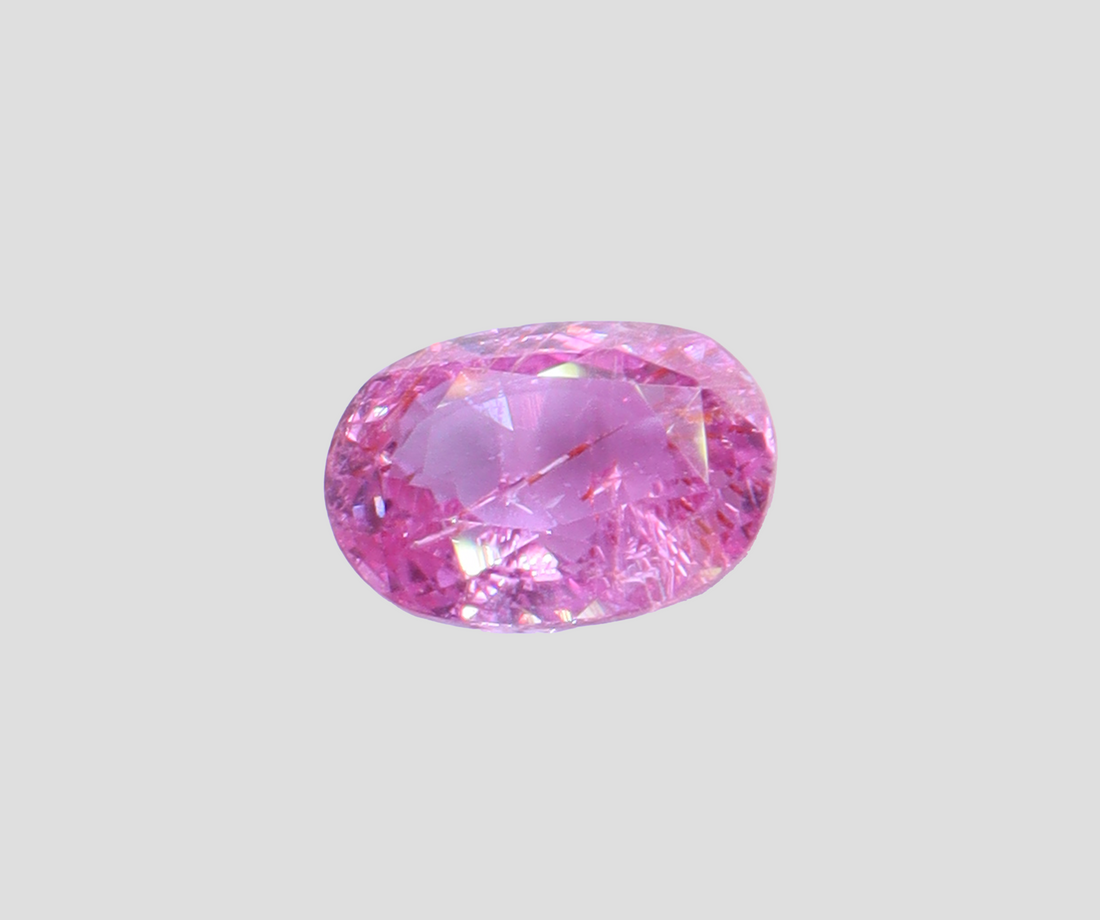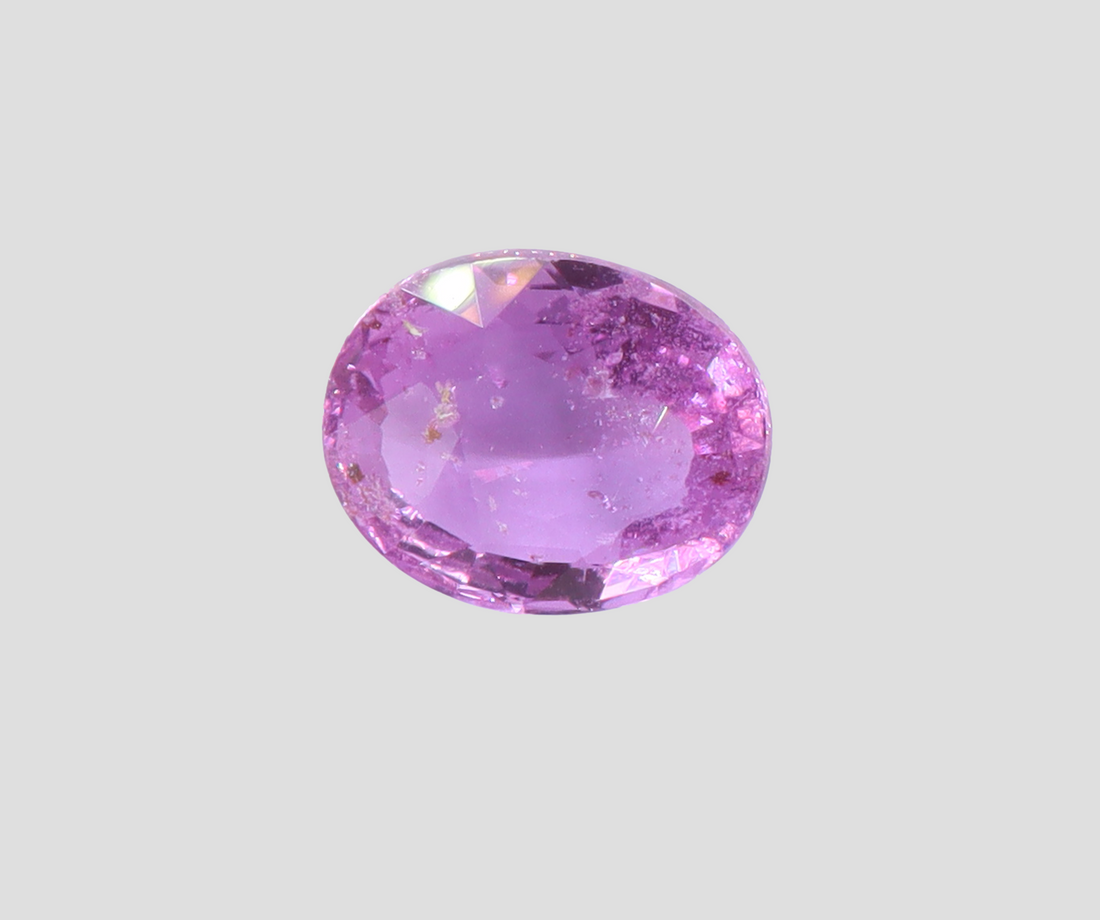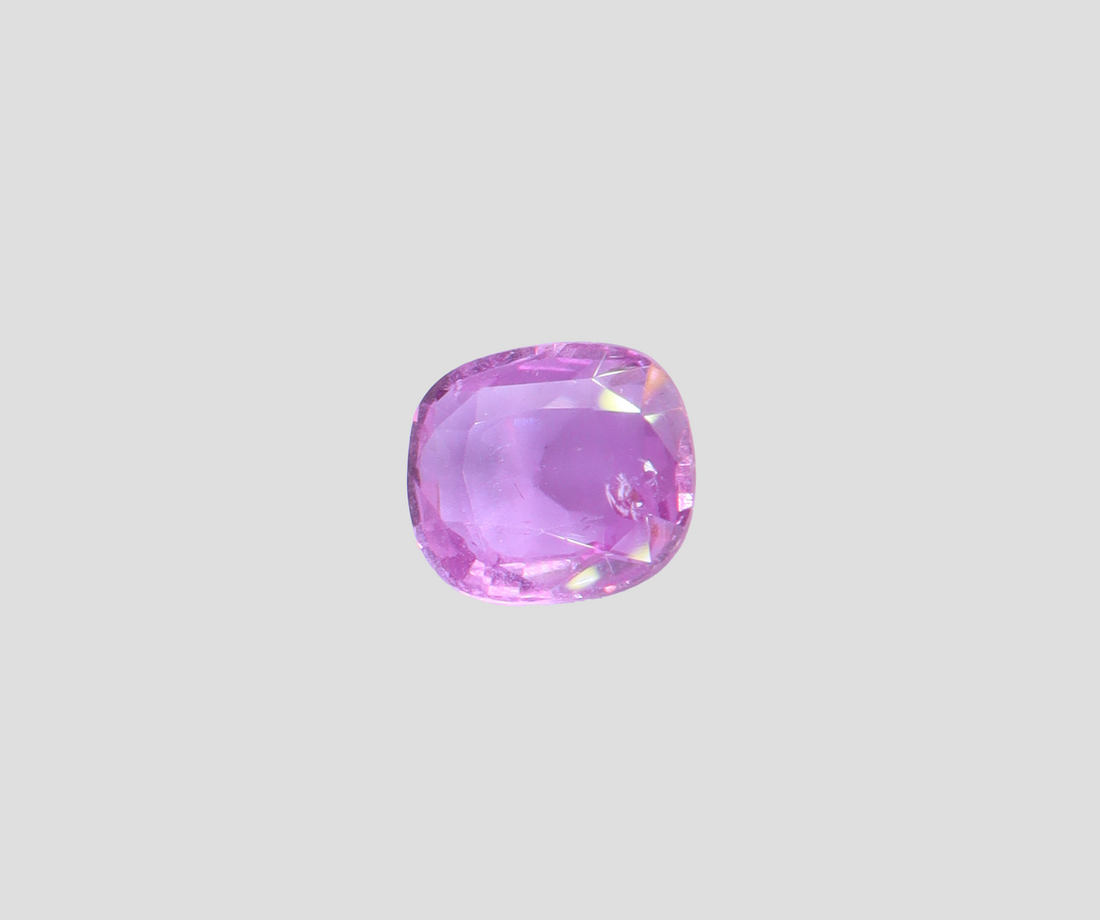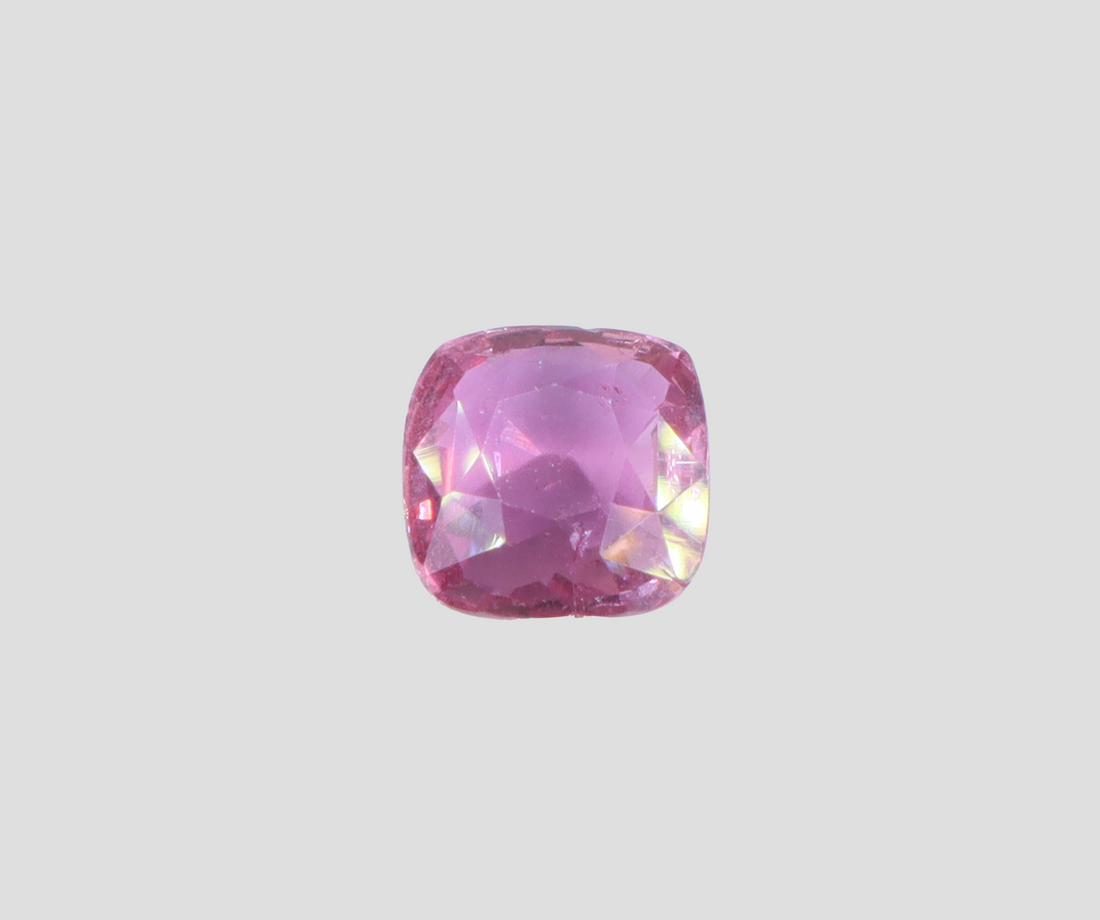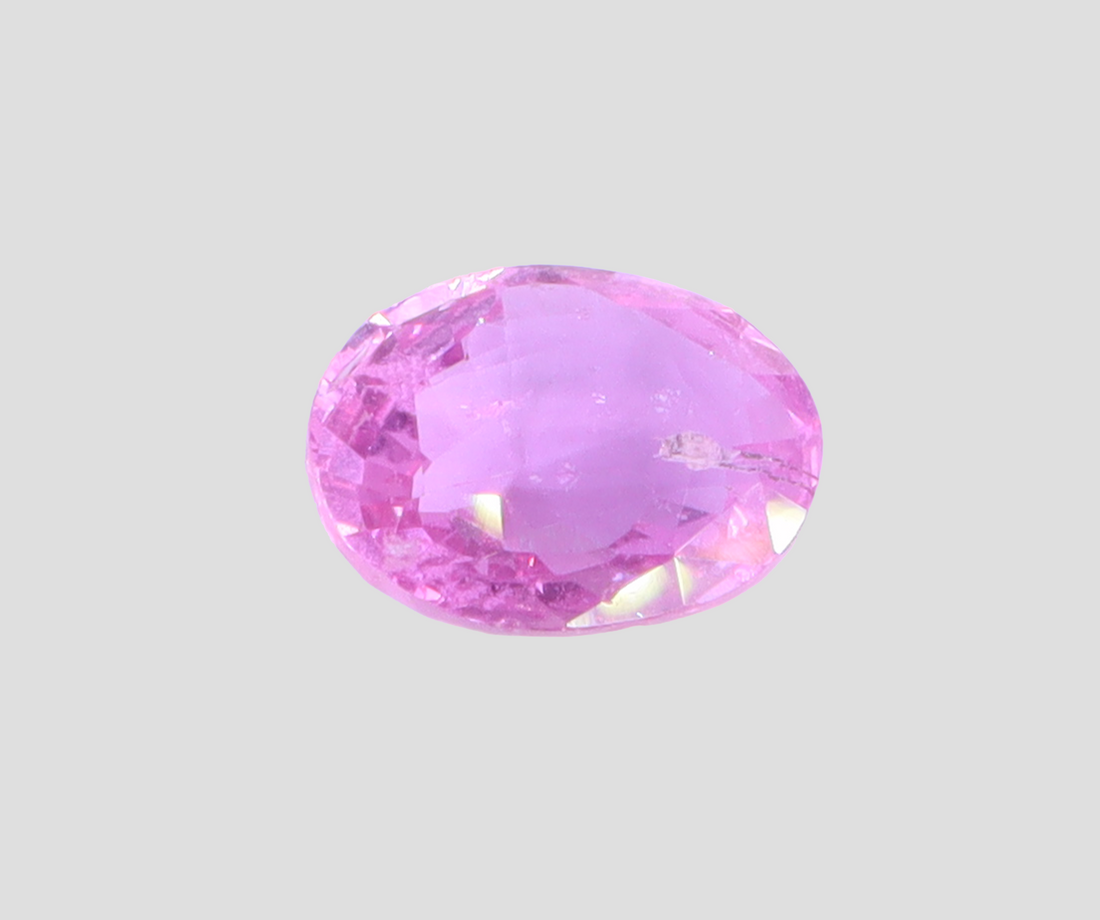This article serves as part of an ongoing series of profiles on the different varieties of precious & semi-precious gemstones. To view the entire list, click here.
Pink sapphire gemstones are a captivating variety of sapphires renowned for their range of pink colors. Part of the corundum mineral group, pink sapphires owe their allure to traces of chromium in their composition. Pink sapphire gemstones offer an alluring blend of aesthetics, brilliance, and longevity. Pink sapphire rings and other jewelry pieces featuring these gemstones, heighten their desirability in the world of fine jewelry.
In this article, we’ve compiled everything you need to know about pink sapphires, including their origins, common inclusions, treatments, how to judge their quality and astrological significance.
1. Pink Sapphires - Formation & Occurrence
Pink sapphires, like all other sapphires such as blue sapphires, rubies, and yellow sapphires, belong to the mineral corundum family. Corundum is primarily composed of aluminium and oxygen, with trace elements responsible for the vivid colors seen in sapphires. In the case of pink sapphires, the presence of chromium and iron within their crystal lattice is responsible for their enchanting pink hues, ranging from a pale and soft baby pink, to intense and vivid magentas.
 A Rough (left), and a cut & polished (right) pink sapphire
A Rough (left), and a cut & polished (right) pink sapphire
These gemstones typically form in metamorphic rocks under high pressure and temperature conditions. They are created through the slow cooling of magma deep within the Earth's crust, allowing crystals to grow over millions of years. Over time, geological forces bring these rough sapphires to the surface, where they can be mined and later transformed into stunning pieces of jewelry.
2. Where Are Pink Sapphires Found?
Pink sapphire stones are found in various locations around the world, each with their distinct characteristics. Some popular sources of pink sapphires are:
- Madagascar: The pink sapphire paradise, Madagascar is celebrated for its diverse range of pink sapphires – from pale pink and soft pastels to deep and intense magentas.
- Ceylon (Sri Lanka): An abundant source of fine pink sapphires, Sri Lanka boasts a rich history of providing high-quality pink sapphire gemstones, distinguished by their exceptional color purity. These sapphires often exhibit a pure and vivid pink color that sets them apart.
- Burma (Myanmar): A preeminent source of rubies, Burma is also a renowned source of unique pink sapphire stones, with distinctive and captivating hues. The colours of these Burmese pink sapphires can include shades of magenta, red, and purple. Burmese pink sapphires often exhibit inclusions and are typically lighter in color compared to those from Madagascar or Sri Lanka/Ceylon. They are highly sought after due to their unique colors and rarity.
- East Africa: Emerging as a source of pink sapphires, countries in East Africa like Tanzania and Kenya offer a diverse range of pink sapphire colors, adding variety to the market with their unique shades and increasing recognition in the gemstone industry. Pink sapphires from East Africa can range anywhere from a light, bubble-gum pink, to a rich hot pink, to a dark and full magenta.
3. Are All Pink Sapphires, Pink?
Contrary to their name, not all pink sapphires are uniformly pink. The color of a pink sapphire can span a wide range, from delicate soft baby pinks to intense and vivid magenta shades. The Gemological Institute of America (GIA) grades pink sapphires on a scale from 'Light Pink' to 'Fancy Vivid Pink,' considering the intensity of the pink colour and the presence of secondary overtones such as purple or orange.
In general, sapphires occur in a rainbow of colours, spanning from blue to red (commonly referred to as ruby), and even hues like orange-pink, known as Padparadscha sapphires, as well as yellow, green, and purple, among others. The perception of color is subjective because different individuals may see colors slightly differently. Consequently, various gemmological laboratories may assign different color grades to the same stone. For example, the orange-pink sapphire variety is classified as Padparadscha sapphire, but while some labs officially recognize it as such, others may simply categorize it as an orangish-pink sapphire without using the Padparadscha label. This diversity in classification applies to rubies as well – where some labs may classify it as a ruby, but others may classify it as a pink sapphire.
 Pink Sapphires occur in a range of pink shades, often with purple & orange overtones
Pink Sapphires occur in a range of pink shades, often with purple & orange overtones
It's important to consider these differences in color grading and select a gemstone based on your personal preference. Despite variations in color terminology, it's essential to remember that these gemstones share the same chemical and atomic structure, all being types of corundum. What sets them apart are the differences in their hue, colour tone, and color saturation.
4. Common Inclusions in a Pink Sapphire
Like most gemstones, pink sapphire stones often contain natural inclusions, which are tiny imperfections within the stone. These inclusions can take the form of mineral crystals, tiny fractures, or color zoning.
One of the most frequent inclusions found in pink sapphires is the presence of microscopic, thread-like structures known as "silk". These silk inclusions consist of tiny, needle-like crystals of the mineral rutile. Fingerprint inclusions are another common sight in pink sapphires. These inclusions appear as swirling patterns, resembling actual fingerprints. They result from a complex history of growth, dissolution, and alteration processes that the gemstone undergoes during its formation. These fingerprints, while intriguing, can sometimes diminish the overall clarity of the gem. Moreover, pinpoint inclusions, often too small to be discerned with the naked eye, are also frequently present. They consist of tiny crystals or mineral specks within the gem. Pinpoints can be of various minerals, such as apatite or mica, and are crucial in identifying the sapphire's origin.
 Silk inclusions within a pink sapphire (Source: GIA)
Silk inclusions within a pink sapphire (Source: GIA)
Examining these inclusions within pink sapphires can provide a profound understanding of their formation, quality, and potential origin.
5. Common Treatments & Enhancements of Pink Sapphires
Natural pink sapphires often come with inherent inclusions and imperfections that can influence their clarity and overall market value. As a result, pink sapphire stones frequently undergo various treatments and enhancements to enhance their visual appeal and durability.
One of the primary and widely practiced treatments for pink sapphires is heat treatment or thermal enhancement. Heat treatment, widely accepted in the industry, involves subjecting the pink sapphire gemstone to controlled high temperatures. This process aims to refine the gem's color and clarity, effectively eliminating or reducing the visibility of inclusions. Simultaneously, it enhances the overall color saturation, resulting in a more visually striking pink sapphire. It's important to note that this standard heat treatment doesn't compromise the structural integrity or longevity of the stone.
Another common treatment is lattice diffusion which involves introducing a foreign element, such as beryllium within a stone, in order to enhance its colours. Such treatments can significantly alter the elemental composition of the sapphire, impacting its structural integrity, and are often not favourable for the longevity of the stone. Sellers must disclose any treatments or enhancements applied to gemstones to ensure transparency and help buyers make informed choices.
| Mineral | Corundum |
|---|---|
| Colour Span | From delicate pale pinks to vivid and uniformly-saturated intense pinks & magentas. They may also occur in overtones of purple or orange. |
| Popular Origins | Madagascar, Ceylon (Sri Lanka), Burma (Myanmar), & parts of West Africa |
| Mohs Hardness | 9.0 (on a scale of 10) |
| Common Treatments | Thermal Enhancements; lattice diffusion |
| Birthstone | September |
Pink Sapphires - A Quick Snapshot
6. Evaluating the Quality of a Pink Sapphire
When evaluating the quality of a pink sapphire, one can’t go wrong with the 4Cs + origin framework:
- Origin: The origin of a pink sapphire stone can significantly affect its value. For instance, sapphires from Madagascar are often highly prized due to their exceptional color range, while Ceylon sapphires are celebrated for their historical significance and fine quality.
- Colour: The intensity and evenness of the pink colour are crucial factors in evaluating a pink sapphire gemstone. Stones with a pure pink hue and strong color saturation are considered more valuable.
- Clarity & Inclusions: Clarity is an essential aspect of pink sapphire quality. While some inclusions are acceptable, high-quality pink sapphires should have good clarity, allowing light to pass through without significant obstructions.
- Carat weight: As is the case with most gemstones, the value of a pink sapphire increases with its size. Pink sapphires within the weight range of 2 - 4 carats are relatively common, while specimens weighing over 5 carats are considered large and may command a size premium due to their rarity.
- Cut: The cut of a pink sapphire is a critical factor that significantly influences its brilliance and visual appeal. It refers to the way the gem is shaped, faceted, and polished. The precision and quality of the cut can enhance the gem's overall beauty and its ability to reflect light effectively. An excellent cut will bring out the best in the pink sapphire's color, making it appear vibrant and lively. On the other hand, a poorly cut sapphire might appear dull or lacklustre, even if it has a beautiful color.
To determine the overall quality of a pink sapphire, it is important to work with a reputable jeweller or gemmologist who can assess the gemstone's characteristics and provide an expert opinion.
7. How Much Do Pink Sapphires Cost?
The price of pink sapphire gemstones varies widely based on their origin, color, clarity, and carat weight. In general, Madagascar pink sapphires can begin from about $150 per carat and can go upwards of $5500 per carat for high-quality pieces. Sri Lankan or Ceylonese pink sapphires can range from $100 to $8000 per carat. Finally, Burmese pink sapphires, with their unique color, can be priced between $100 and $10000 per carat, depending on their overall quality.
It's also important to note that a pink sapphire's classification can also influence its price. If it's graded as a ruby, its value can substantially increase due to the perceived rarity and desirability of rubies. Likewise, Padparadscha sapphires, with their blend of light pink and orange, often command premium prices due to their rarity and distinct coloration.
8. Pink Sapphires in Astrology
According to Vedic astrology, pink sapphires are associated with the Sun (Surya) and are believed to:
- Influence the heart chakra, fostering love, compassion, and emotional healing.
- Enhance durability, elevate emotions, and remove emotional obstacles.
- Improve professional and financial status.
- Strengthen the influence of the Sun in the horoscope.
It's crucial to highlight that the use of gemstones for astrological purposes is a nuanced field. Therefore, individuals should seek guidance from certified astrologers or gemmologists before employing gemstones in such contexts. If you’re looking to buy pink sapphire online, or a pink sapphire engagement ring, we invite you to browse through Precious Earth’s curated collection of these stones – where with our free lab certifications and lifetime returns policy, you can rest assured of a genuine purchase at our store.

